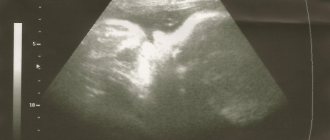During pregnancy, the female body switches to a completely different mode. All parameters change: hormonal levels, blood composition and circulation speed, heart rate, etc.
First of all, the amount of progesterone increases, preparing the body for motherhood. Thanks to it, in the very first days of pregnancy, a clot resembling jelly forms in the cervix - a mucous plug.
It will remain there almost until birth, protecting the fetus and uterus from infections. Its departure is considered the first sign of an approaching important moment.
What is a mucus plug
She is a natural barrier between the outside world and the child. The plug is a dense lump of mucus. Its production is activated from the first days after conception. Mucus accumulates and thickens over time. By the end of the period, it becomes thick, reminiscent of jelly, jellied meat.
The mucus plug before birth serves to protect the baby from infections and harmful microorganisms that can harm the expectant mother or fetus by entering the uterus through the vagina, for example, during bathing.
However, its departure does not mean that the child is completely deprived of protection. In addition to the plug, the baby is protected by amniotic fluid and the amniotic sac; this is not so reliable, but still a barrier to harmful organisms.
However, you should exercise prudence: for example, wash in the shower, and not swim in the bathtub or in rivers, lakes, or public pools.
Expectant mother at 39 weeks
This period is completely normal for labor and it can begin at any day and time. It is not recommended to go on long trips, even within your hometown. You should always have an exchange card and the necessary documents (passport, compulsory medical insurance) with you.
There are certain changes in the body that can tell you when to expect labor. For example, loss of appetite and weight.
- Pelvic bones
- Abdominal prolapse
Abdominal prolapse can be expected from 36 weeks. We described this phenomenon in detail here. The baby moves lower, closer to the pelvis, preparing for birth. This makes it easier for the woman to breathe. But the pressure moves to the pelvic organs, so the load on the bladder will increase.
- Mucus plug
An admixture of mucus in the discharge from the genital tract represents particles of the mucus plug that closes the entrance to the uterus. But the mucus plug itself can be seen in the form of a lump of mucus (sometimes streaked with blood), the volume of which is approximately 2 tablespoons.
Training contractions begin as early as 30 weeks of pregnancy. You can determine which contractions have overtaken a woman - false or real - by the following points:
- Duration. False contractions last 15-20 seconds. The true ones then become longer and longer.
- Regularity. False contractions are irregular. The true ones are stronger, longer lasting and occur more often.
- Mucous discharge. With false ones, there is no mucous discharge from the vagina. True ones are accompanied by discharge mixed with blood.
- Warm shower. False contractions will disappear. The true ones will continue.
- Leakage of amniotic fluid
When the dilation of the cervix reaches 7 cm or more, the amniotic fluid is discharged. What to look for near the waters?
- Color. The water should be light and transparent, white flakes are also acceptable.
- Quantity. There should be about 1-1.5 liters.
- Smell. Amniotic fluid has no odor.
If there are any deviations in the appearance of amniotic fluid from the clinical norm, immediately notify your doctor.
After the amniotic fluid has broken, labor should begin within 24 hours (24 hours). After the water breaks, contractions become stronger and more painful.
When does the plug come out?
Under ideal conditions, the clot becomes soft and passes 1-2 weeks before delivery. The optimal time for its departure is the 38th week.
It also happens that this happens a little earlier or a few minutes before moment X. Therefore, in any case, do not panic. It is also worth remembering that the plug in primiparous women “sits” tighter, so it comes off later.
And with repeated births, rejection occurs a little earlier. This happens because the birth canal widens slightly and retains mucus less well. Therefore it flows out more easily.
If mucus is noticed, you need to call the gynecologist and inform about what happened, tell in detail what the mucus looked like, and whether it had a suspicious smell.
The discharge of mucus does not occur in isolation or independently. Soon after or shortly before the plug is rejected, training contractions begin, the abdomen droops, and weight decreases.
It is important not to confuse a loose mucus plug with leakage of amniotic fluid!
Situations in which consultation with a doctor is necessary
A woman should be wary of the fact of premature rejection of the plug. If characteristic discharge appears before 38 weeks, you can suspect the following:
- Presence of intrauterine infection. She starts the birth process ahead of time.
- Subsequent discharge of amniotic fluid, which is accompanied by placental abruption.
- Developing bleeding. This is indicated by the presence of scarlet blood of any volume in the discharge.
Particularly dangerous for the child and mother is placental abruption. This condition is accompanied by bloody discharge, acute pain, and increased body temperature, which can occur at any stage of pregnancy. If these symptoms appear, you must call an ambulance and go to the hospital. Only coordinated actions of doctors will save the child’s life and prevent intense blood loss.
Immediate contact with a gynecologist is necessary when the process of release of the plug is accompanied by the discharge of amniotic fluid. Additionally, nagging pain may be observed. In such a situation, artificial or natural delivery should occur within 12 hours. This time is characterized by doctors as completely safe for a child in the womb in an anhydrous environment.
What does a “correct” plug look like?
Women's bodies are not factories, so the correct mucous clot has variable characteristics. They differ not only from woman to woman, but also from pregnancy to pregnancy.
The plug during pregnancy is usually shapeless, not hard, but has a consistency resembling a gel. It resembles a small walnut in size and shape.
The clot can be either completely transparent or cloudy, reminiscent of egg white. The color fluctuates, it can be yellowish, whitish, pinkish, brownish.
There may be small spots of blood. A limited number of them is considered a normal variant due to injuries to small vessels caused by shortening of the cervix.
Green or yellow discharge indicates a deviation from the norm. Most often, this symptom indicates fetal hypoxia.
An unpleasant smell should also alert you. Too thin a consistency may indicate leakage of amniotic fluid. Any of these problems is a reason to consult a gynecologist.
How to cope with pain?
The cervical mucus cleared and the woman went into labor. During contractions, a woman in labor usually has pain in her lower back and a tightening in her lower abdomen; this process is associated with pain. Is it possible to relieve pain during contractions? There are 2 groups of labor pain relief methods. Medication methods:
- epidural administration of anesthetics;
- spinal block;
- Pethidine injections;
- gas anesthesia with nitrous oxide.
Non-medicinal methods include:
- psychological preparation;
- massage;
- transcutaneous nerve stimulation (TENS);
- aromatherapy;
- hypnotherapy;
- impact on reflex zones;
- water birth;
- yoga.
Each of these methods has its pros and cons. Before choosing any method of pain relief, including non-medicinal ones, you must consult a doctor to identify possible risks and contraindications.
Obstetrician-gynecologist, reproductive specialist, lactation consultant, graduated from ChSU named after. Ulyanova with a specialization in gynecology, mammology Read more »
How to distinguish leakage of amniotic fluid from the passage of a mucus plug
Inexperienced mothers may confuse the release of the plug with leakage of amniotic fluid. If the first is a normal physiological process, then the second is a dangerous pathological condition.
Characteristic features:
- the plug comes off 3-10 days before the due date, and amniotic fluid can begin to leak at any stage of pregnancy;
- released mucus is a symptom of impending delivery, and water may leak as a result of injury, for example, a fall;
- if pregnancy proceeds without pathologies, then the color of the discharge is beige, yellowish, brownish, may contain a small amount of bloody streaks, and the water has a pinkish and light green tint;
- they also differ in consistency: the first is thick, viscous, mucous, the second is liquid, flowing, watery;
- mucus comes out in small portions of 10-20 ml over several days, less often - in a single lump, and water leaks constantly, the volume of discharge increases with coughing, laughing, sneezing, jolting and sudden movements.
You need to observe yourself and your feelings, as well as the nature of the discharge. In a day or two the picture will become completely clear.
If there is still a suspicion of leakage of amniotic fluid, you will need to consult a doctor. Their premature departure may indicate pathology.
How does a woman feel when a mucus plug comes out?
When the plug comes out, the woman is bothered by nagging pain in the lower abdomen, lumbar region, and sacrum. It's a bit like the feeling at the beginning of your period.
The pain is not severe, passes quickly and does not cause significant discomfort. If unpleasant sensations arise in the shower or when visiting the toilet, the woman will not notice them at all.
How a cork comes out in pregnant women: there is no single scenario, it is always individual. In some cases, mucus comes out in noticeable portions. It can be found on swimming trunks, panty liners, and sheets. It is almost impossible not to notice this process.
Sometimes the release is very slow and gradual, the woman does not attach importance to the slightly increased volume of discharge.
It happens that the plug comes out completely at once, for example, during bath procedures. Then the woman feels as if something has fallen out of her.
Scheme of actions for the appearance of nagging pain in the abdomen
In the last weeks of pregnancy, the expectant mother notices that the lower abdomen or lower back feels tight and painful. In the absence of frequency and other symptoms, the appearance of training contractions is suspected. The female body is preparing for the upcoming birth, but it has not yet begun.
To alleviate your condition, it is recommended to take No-Shpu or lie in a warm bath for a while. Such activities will relieve tension, relax the body and discomfort will disappear. The onset of labor after the complete removal of the plug and the appearance of pain does not necessarily occur immediately. This process may take several days, which is normal for doctors.
Tugging sensations also appear during real contractions. They are accompanied by spasms, girdling pain, concentrated in the lower abdomen and lumbar region. Unpleasant sensations occur with a certain frequency. Gradually, the interval between developing spasms decreases, which indicates the approaching process of delivery. In primiparous women, 2-18 hours pass from the onset of contractions to the birth of the child.
Why can bloody streaks be detected?
A small amount of blood in the plug is normal. This is due to the fact that by the end of pregnancy the cervix “ripens”: it levels out, becomes shorter, and expands.
This happens in order to shorten and facilitate the baby’s path through the birth canal as much as possible. However, when the size of the cervix changes, small vessels are inevitably injured
.
Because of this, a small amount of blood is released, interspersed with it and found in the discharge. For the same reason, mucus turns brown.
What to do if the plug comes off
The woman noticed that the mucus was coming out. Options for action depend on how long it happened.
- If rejection occurred before the 37th week, then this is a serious cause for concern. This may signal that premature labor is beginning. Therefore, it is necessary to call the doctor and report what happened.
- If the process occurred at the 38th week, then this is a variant of the norm. There is no need to worry and get the doctor and ambulance on their feet. However, at your next visit to the doctor, this issue must be discussed.
- If the clot has not passed, then there is no need to worry. Maybe he left earlier, just unnoticed. Or it will come out later, during childbirth. Often mucus lingers in the body until contractions.
- If red blood comes out in large quantities along with the plug, then it is necessary to urgently call doctors. This is an alarming sign indicating placental abruption or placental previa.
After the plug comes out, you will have to take some precautions:
- refrain from bathing, it is better to wash in the shower, this reduces the risk of pathogenic bacteria entering the vagina;
- do not visit public swimming pools and open bodies of water;
- when caring for intimate parts of the body, you need to use soft, non-aggressive products and use natural ingredients;
- When having sex, you must use condoms or other barrier methods of contraception.
There is no need to panic: even without a protective barrier, the child does not become vulnerable.
Baby at 39 weeks of pregnancy
A baby at 39 weeks of gestation is considered full-term. The movements subside because... There's not enough space at all. It is impossible to change the presentation of the fetus at this stage. It is now that the doctor will determine the type of birth: spontaneous or cesarean section.
Now the baby looks exactly as it should when born. The sense organs are developed, the nervous system is formed. The heart, lungs and kidneys are ready to support the child's life. The pancreas produces enzymes that will break down food in the baby's stomach.
The baby's size at 39 weeks is about 51 - 52 cm, and his weight is 3200 g. He is in the fetal position, which will be characteristic of him for some time after birth. The child already has fully developed vision, which helps to distinguish colors and respond to movements.











